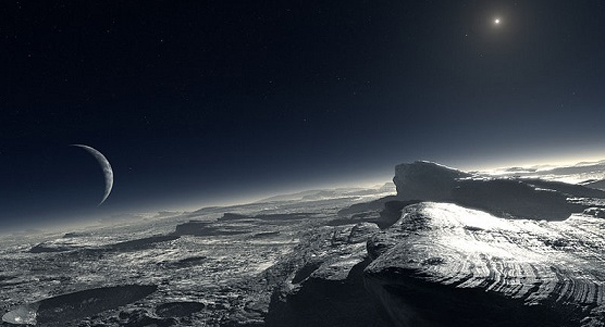
Photos sent to NASA from the New Horizons space probe show the dwarf planet Pluto in dazzling detail, revealing aspects of its surface geometry and other mysteries to astronomers on Earth.
Scientists on Earth have caught a rare glimpse of the face of our solar system’s smallest dwarf planet, Pluto. According to Universe Today, the New Horizons space probe has just sent home a fresh batch of photos of the tiny planet, from 20 million miles closer than the last batch in April.
Astronomers were shocked to find that the polar caps on the top and bottom of the dwarf planet were much larger than they expected. They also got to take a look at Pluto’s varied surface textures in much higher resolution than ever before, revealing new details about the mysterious planetoid.
According to New Horizons Principal Investigator Alan Stern, “These new images show us that Pluto’s differing faces are each distinct; likely hinting at what may be very complex surface geology or variations in surface composition from place to place.”
Though the photos reveal details never before seen by scientists, they caution against over-interpreting some of the smaller points in the photos. The pictures were processed using a technique called deconvolution, which omits any information that is out of focus to emphasize the details the camera was able to catch. Deconvolution can add misleading details or artifacts in photos, which means that scientists will have to wait for New Horizons to get closer to Pluto before they can confirm some of their hypotheses.
Despite the uncertainty surrounding smaller details, it is safe to say that Pluto’s surface has more variations than scientists ever thought. They are still unable to tell whether or not the polar cap is made of ice or some other substance, and hope to find out as New Horizons soars closer to the tiny planet. The spacecraft is expected to be closest to Pluto on July 14, and currently is traveling at a rate of about 750,000 miles each day. By late June, astronomers hope to have photos of the dwarf planet with four times the resolution of the shots received this week.